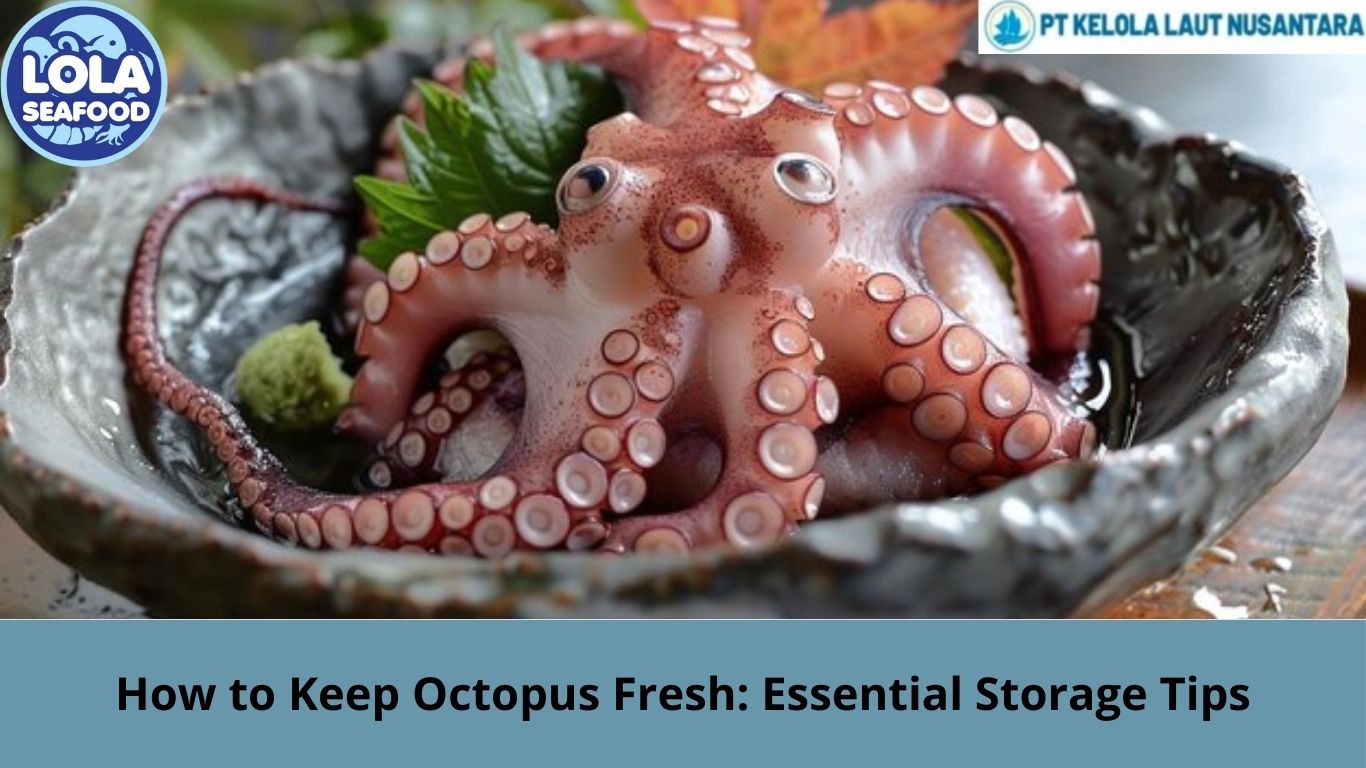How to Keep Octopus Fresh: Essential Storage Tips
By. Fajar - 18 Feb 2025
Kelolalaut.com Octopus is a delicious and versatile seafood ingredient used in cuisines worldwide. However, because it is highly perishable, proper handling and storage are essential to maintain its freshness, texture, and flavour. Whether you purchase fresh or frozen octopus, following the right steps ensures you get the best quality for your dishes. Here’s how to keep octopus fresh for as long as possible.
1. Choosing the Freshest Octopus
The first step to keeping octopus fresh is selecting a high-quality one. When buying fresh octopus, look for these signs:
- A firm and slightly elastic texture
- A mild ocean scent, rather than a strong fishy odour
- Clear, bright skin with no discoloration
- Moist flesh without excessive slime
If purchasing frozen octopus, ensure the packaging is intact and free from freezer burn. High-quality frozen octopus should be solidly frozen with no excess ice crystals, which can indicate thawing and refreezing.
2. Storing Fresh Octopus in the Refrigerator
If you plan to cook the octopus within a day or two, store it properly in the refrigerator to preserve its freshness. Here’s how:
- Keep it cold: Store fresh octopus in the coldest part of your refrigerator, ideally at a temperature of 32–34°F (0–1°C). Use a thermometer to check your fridge’s temperature if needed.
- Use airtight packaging: Place the octopus in an airtight container or vacuum-sealed bag to prevent exposure to air and moisture loss.
- Add ice for extra freshness: To maximize freshness, place the octopus in a bowl over crushed ice, covering it loosely with plastic wrap. Replace the ice daily until you’re ready to cook.
- Limit exposure to air: If left exposed, the octopus can dry out or absorb unwanted odours from other foods in the refrigerator.
3. Freezing Octopus for Long-Term Storage
If you’re not planning to cook the octopus within two days, freezing is the best option. Freezing not only preserves the octopus but also helps tenderize it. Follow these steps for proper freezing:
- Clean the octopus: Wash it thoroughly under cold water and remove the ink sac, eyes, and beak if they haven't been removed already.
- Portion it: Cut the octopus into smaller sections if you prefer to thaw only what you need later.
- Use airtight packaging: Wrap the octopus tightly in plastic wrap and place it in a freezer-safe bag or vacuum-sealed pouch. Removing excess air prevents freezer burn.
- Label and date: Write the freezing date on the package so you can keep track of freshness. Frozen octopus is best used within three to six months.
4. Thawing Octopus Properly
When it’s time to cook, thaw the octopus safely to preserve its texture and flavour. The best method is to transfer it from the freezer to the refrigerator and let it defrost overnight. For a quicker thaw, place the sealed octopus in a bowl of cold water, changing the water every 30 minutes. Avoid using warm water or microwaving, as these can affect the texture.
By following these steps, you can keep octopus fresh and enjoy it at its best. Proper storage ensures great taste, texture, and food safety, whether you’re grilling, boiling, or making ceviche.
If you are interested in our baby octopus flower, baby octopus whole cleaned and baby octopus whole round please do not hesitate to contact us through email and/or whatsapp
 and Employee Productivity on the Demersal Fish Processing Floor.jpg)
The Correlation Between Occupational Health and Safety (OHS) and Employee Productivity on the Demersal Fish Processing Floor

Human Resource Management Challenges and Training Needs in Implementing HACCP Quality Standards within the Fish Processing Industry

The Legal Shark Value Chain: Identifying Critical Control Points for Cost Efficiency and Value Enhancement from Catch to Consumer

Global Trust Across Three Segments: How the HACCP System Ensures Premium Quality for Demersal, Pelagic Fish, and Legal Shark Product Utilization
.jpg)


 in Meeting Global Protein Demand Sustainably.jpg)
